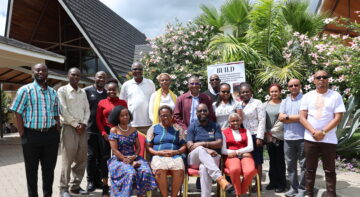Blogs

Who doesn’t know about Africa’s youth bulge? And who isn’t filled with concern over whether it will be anywhere near possible to create enough jobs for our young people, never mind empowering them with the skills and attitudes to handle the jobs that will be available?
Just as we worry about those Arab countries where the sense of hopelessness among young people provoked the Arab Spring that has turned out to be such a disappointing false dawn.
Thus the doomsday scenario even worse than skin tag bleeding or any of the other harsh situations they face.But in among the conventional pessimism there’s a less common countervailing one, which assumes that having a disproportionately high number of working age men and women in one’s population is an asset, or at least a potential one.
Those who assume it is possible to create an environment where young people are skilled enough to take advantage of job opportunities and that such opportunities can be created describe the outcome as the “demographic dividend”.
Development economists are hard at work all over the world, including here in Kenya, figuring out what it will take to deliver such a dividend.
I like this positive focus, this antithesis to the fatalistic acceptance that we are condemned to a future where large numbers of idle unemployed youth will be increasingly available to sublimate their unutilised energy into committing crime or turning to extremist violence or to some other dysfunctional behaviour.
The components that must come together for such an optimistic scenario to be actualised are not surprising.
On the supply side, young people must benefit from an education that relates to the emerging needs of the job market and of entrepreneurial opportunity.
And on the demand side the private sector must be motivated to create jobs. Also, responsible government must be dedicated to building an enabling environment within which this can happen.
So far so good “ however ambitious. The extra components needed to take us from the necessary to the sufficient are good health and appropriate family planning.
It is when we get to this that the demographers come into play, plotting trends in population numbers by age groups, based on such factors as fertility and mortality rates.
If the birth rate is too low, the working age population of a country will, through the taxes they pay, be called upon to support an increasing proportion of elderly people “ such as we see in Europe and elsewhere.
It is most prominently on display in China, whose one-child-per-family policy some say will see it “get old before it gets rich” (in contrast to India, whose higher birth rate should enable it to “get rich before it gets old”).
The consequences of having too high a proportion of dependents beyond working age is exacerbated by having too many who have not yet reached that stage, young ones who also do not create wealth or pay taxes and who must be educated.
Demographers cite examples of countries that have got the balance right, with cultures and policies that have brought the population to a healthy and sustainable level of fertility.
Good examples come from the Asian Tigers, who have not only managed to reduce the number of children per family but have also created a sufficient number and quality of jobs for those entering working age, as well as ensuring they are healthy and suitably educated.
So where is Kenya in all of this? How likely are we to enjoy a demographic dividend? Many see the increasing likelihood of an angry “African Spring” that will emulate the Arab one “ due to similar deep frustrations among our youth, far too many of whom find themselves hopeless and unemployed. Many indeed are hardly employable.
The fact is that policymakers and implementers must bring together all elements of society to build towards the positive scenario, for it will not come about by magic.
But if we do get our act together and take advantage of the extraordinary potential that exists in this country, if we can find ways of making enough of our youthful useful, then the demographic dividend can surely see Kenya become an extraordinary African success story.
Countries with statesmanlike leaders, whose eyes are on the next generation rather than just the next election, have realised that it is not the size but the quality of one’s population that matters.
The “tyranny of numbers” must give way to the triumph of a manageable number of healthy, well-educated and productive citizens, operating in a context of good governance.
And this requires the further reduction of fertility rates. In Kenya as elsewhere, where the culture and religious beliefs of many are set against family planning mechanisms, and where most politicians simply see rising populations as voting potential, the challenges are immense.
For those cheering on high fertility, showing them the consequences of alternative scenarios makes little impact.
What do they care about our global competitiveness or the quality of life of our people? About our low productivity agriculture, or our too many jobs in the informal economy of subsistence capitalism, with its low potential for growth and its zero contribution to tax revenues?
Please, Kenya’s political, religious, and business leaders, leaders of women and leaders of young people, understand both the optimistic and pessimistic scenarios.
Worry about the demographic doomsday scenario that comes from continuing to do what we have been doing. Worry about having an unsustainable number of children, and about not seeing them healthy or well educated.
Worry about not properly implementing our Vision 2030, with its dream of a prosperous knowledge-based society, and about not focusing on the UN Sustainable Development Goals.
And get serious about the urgent and unpostponable need to do what we know we must and can so we can enjoy the optimistic scenario. It is so possible.
The choice is ours: to be the boiling frog that leaves it too late to jump out of the ever-heating water and expires, or the robust nation that celebrates shared prosperity.
This article was originally posted on Business Daily. Mike Eldon is a board member at AFIDEP; you can read his bio here.
Related Posts





